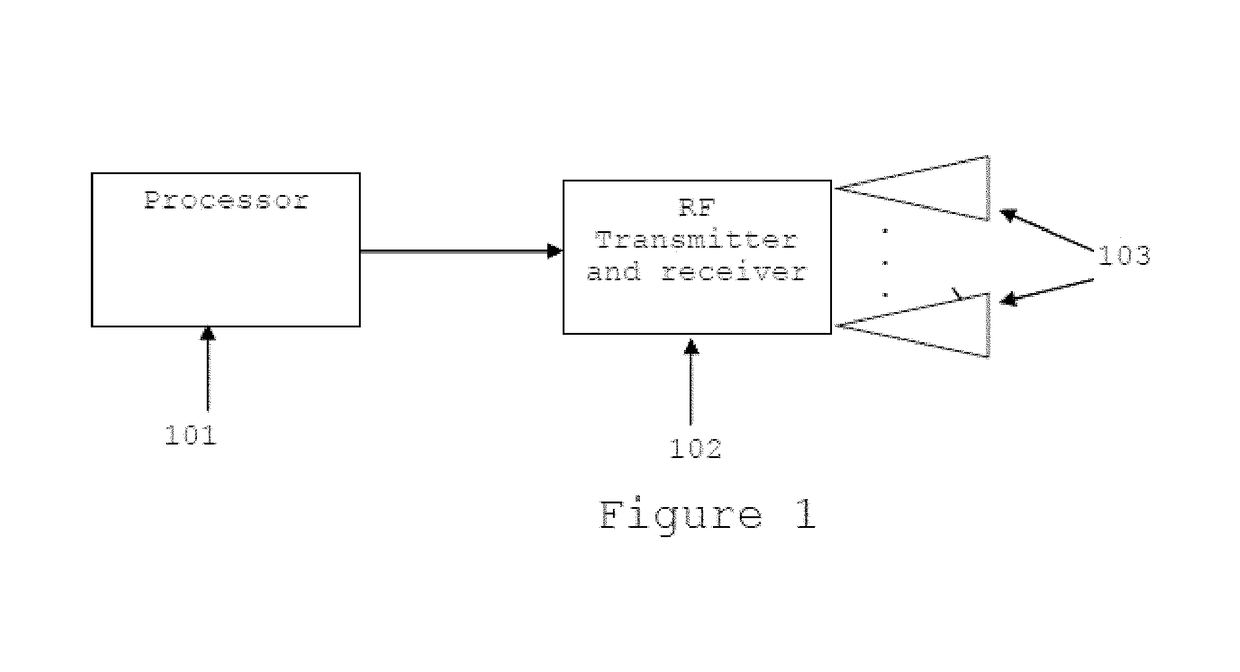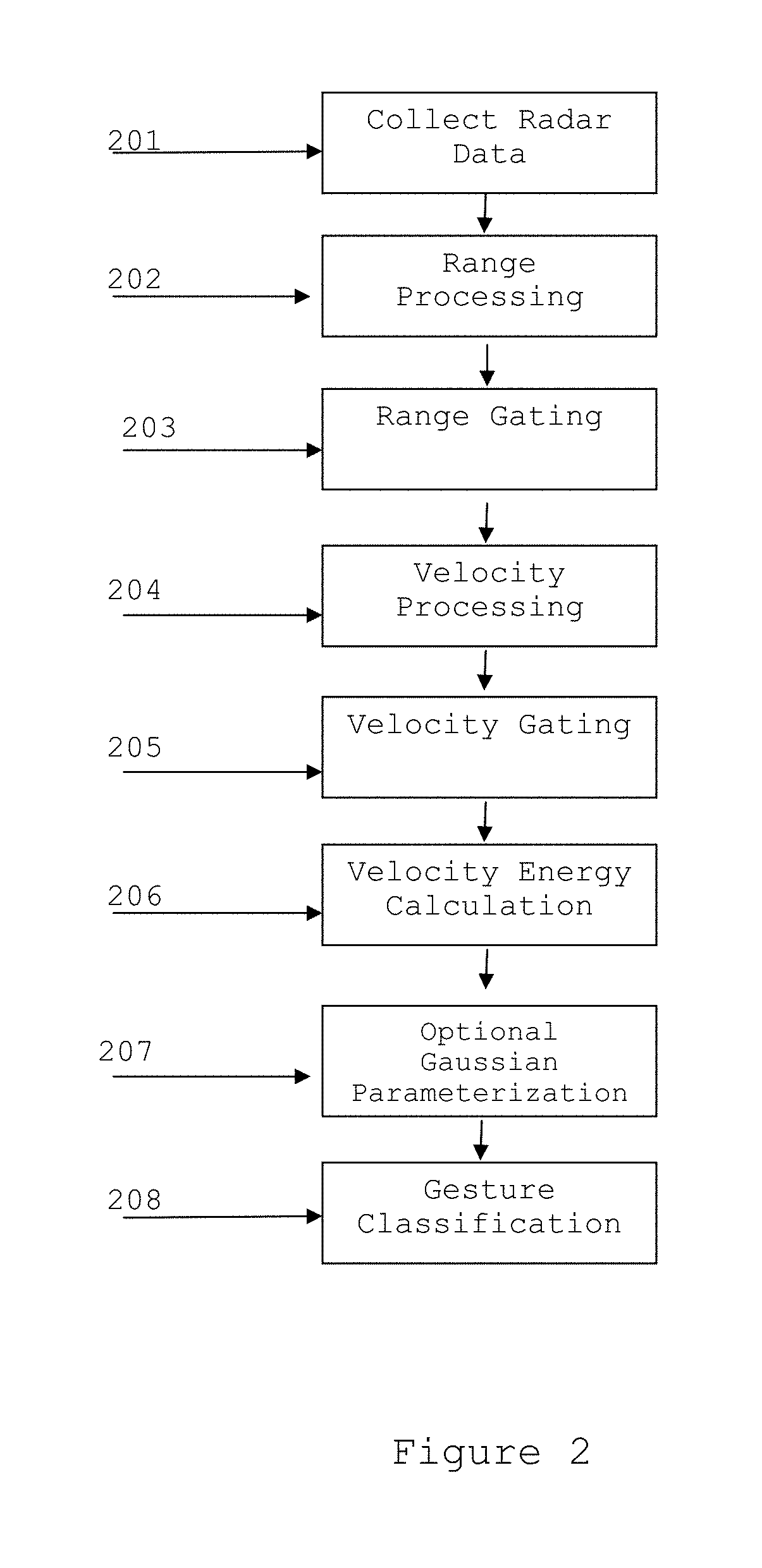Hidden markov model-based gesture recognition with fmcw radar
a markov model and radar technology, applied in the field of radar gesture recognition, can solve problems such as not yet applied in radar-based recognition systems
- Summary
- Abstract
- Description
- Claims
- Application Information
AI Technical Summary
Benefits of technology
Problems solved by technology
Method used
Image
Examples
Embodiment Construction
[0012]Measurements were performed using the FMCW system described earlier. Each frame consisted of 1022 chirps, with an additional frame spacing on the order of 200 ms due to hardware limitations. Processing was broken into two components performed separately: first, the radar data was collected and processed to extract the desired feature vectors; second, the feature vectors were used to train a recognition system based on Hidden Markov Models using the publicly available HTK software package. Recognition was performed using both high dimension and reduced dimension feature vectors.
[0013]In FMCW radar, both range and velocity information can be extracted and processed as part of the recognition task. This is in contrast with using a single tone Continuous Wave system only measuring the micro-Doppler spectrum, and thus is sensitive to any motion within the field of view. The main advantage is that range gating may be performed prior to the construction of the velocity-energy vectors...
PUM
 Login to View More
Login to View More Abstract
Description
Claims
Application Information
 Login to View More
Login to View More - R&D
- Intellectual Property
- Life Sciences
- Materials
- Tech Scout
- Unparalleled Data Quality
- Higher Quality Content
- 60% Fewer Hallucinations
Browse by: Latest US Patents, China's latest patents, Technical Efficacy Thesaurus, Application Domain, Technology Topic, Popular Technical Reports.
© 2025 PatSnap. All rights reserved.Legal|Privacy policy|Modern Slavery Act Transparency Statement|Sitemap|About US| Contact US: help@patsnap.com



